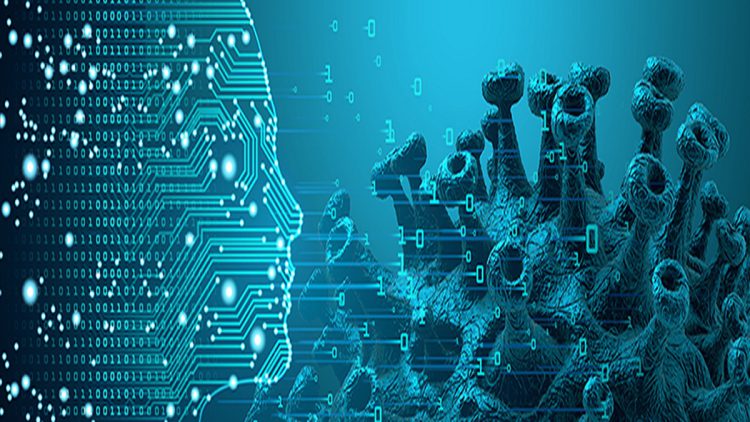 The novel Coronavirus disease 2019 (COVID-19) designated as SARS-CoV-2 is first reported in early December 2019 and short after declared as an infection that can lead to severe respiratory disease. It has proven itself as a complicated disease that can emerge in several forms and its severity levels are ranging from minor to major stages that includes breathing issues to organ failure and even patient death.
The novel Coronavirus disease 2019 (COVID-19) designated as SARS-CoV-2 is first reported in early December 2019 and short after declared as an infection that can lead to severe respiratory disease. It has proven itself as a complicated disease that can emerge in several forms and its severity levels are ranging from minor to major stages that includes breathing issues to organ failure and even patient death.
![Figure 1: Different stages, clinical progression, management and possible therapies of COVID-19. [1]](https://researchblog.nust.edu.pk/wp-content/uploads/2022/04/Figure-1-Different-stages-clinical-progression-management-and-possible-therapies-of-COVID-19.-1-300x154.jpg)
With the exponential rise of confirmed COVID-19 cases and patients who experience cardiovascular complication and severe respiratory issues, it brings a total chaos and tremendous concerns about the consequences of this virus. This concern received a great attention of researchers around the world to determine applicable approach to solve COVID-19 related issues. Conversely, another challenge that researchers have in the path of fighting against the pandemic is to deal with the increasing volume of confirmed cases, which is in the form of big data. This rationalises that the role of Artificial Intelligence (AI) could be very critical in developing and upgrading health care systems on a global scale.
Recently, AI got noticeable attention to solve complex problems in the fields of finance, cybersecurity, engineering, and health care industries. Therefore, a crucial situation like this epidemic requires mobilization to save medical, human, and logistic resources and AI can play the part in expediting the process when even a short period of time could save an important live.
Keeping in view the critical scenario, the researchers from Pakistan, Australia, Czech Republic, Iran, UK, USA, and Canada formed up a team to propose the responses of AI-based techniques to combat against the COVID-19. As a result of this unique collaboration, different AI-based methods have been developed for coronavirus diagnostic systems, that includes Extreme Learning Machine (ELM), Long/Short Term Memory (LSTM), Recurrent Neural Network (RNN), and Generative Adversarial Network (GAN). The geographical concerns, high-risk patients, and identifying and radiology were the main issues with COVID-19 and have been discussed in this collaborative work. [2]
![Figure 2: The process of application of AI-based methods to conquer challenges associated with COVID-19. [2]j](https://researchblog.nust.edu.pk/wp-content/uploads/2022/04/Figure-2-The-process-of-application-of-AI-based-methods-to-conquer-challenges-associated-with-COVID-19.-2j-300x281.jpg)
The flowchart shows the steps involve in the application of AI-based techniques in diagnosis the symptoms. Although the five-layer procedure has been exclusively designed for COVID-19 related issues, however, it has the great potential for utilization in other medical imaging analyses. The initial layer is designed for database of possible cases. The second layer, which is named as selection layer, is associated with the implementation of best possible technique by considering past experiences of the system. This selection is recommended by Artificial Neural Networks (ANN) based selector, which is then forwarded to the third layer to take images if physicians approve the decision of selector. For each patient, different imaging techniques may be recommended in this process. The fourth layer, which is the optimization layer, is designed to perform improvements and optimization of the images. The fifth layer is dedicated for the final diagnosis based on the information saved in the system by an AI-based method.
![Figure 3: AI-based methods in classification, analysis and improvement of the medical imaging approaches. [2]](https://researchblog.nust.edu.pk/wp-content/uploads/2022/04/Figure-3-AI-based-methods-in-classification-analysis-and-improvement-of-the-medical-imaging-approaches.-2.jpg)
The study introduced the mechanism for selecting appropriate models of estimation and prediction of preferred parameters by utilizing different clinical and non-clinical datasets. This assists AI experts to investigate huge datasets and help physicians to analyse optimized data for diagnosis and treatment of the virus in fast and accurate manner. However, it is noted that AI can speed up the overall process to defeat COVID-19 but real experiments should be conducted to fully analyse the advantages and limitations of AI-based techniques. Defeating coronavirus is highly depending on developing an arsenal of approaches, techniques, and tools that can converge to accomplish the main goal of saving lives.
Acknowledgement:
I am thankful to the authors of article [2], specially Dr. ALI LALBAKHSH from Macquarie University, Sydney, Australia (https://researchers.mq.edu.au/en/persons/ali-lalbakhsh) and corresponding author Dr. MOHAMMAD (BEHDAD) JAMSHIDI from University of West Bohemia in Pilsen, Pilsen, Czech Republic.
Reference:
[1] Giuseppe Lippi, Fabian Sanchis-Gomar, and Brandon M. Henry, “COVID-19: unravelling the clinical progression of nature’s virtually perfect biological weapon”, Annals of Translational Medicine, vol. 8, no. 11, pp. 693, 2020, Paper Link: https://atm.amegroups.com/article/view/44496/html
[2] M. Jamshidi et al., “Artificial Intelligence and COVID-19: Deep Learning Approaches for Diagnosis and Treatment,” IEEE Access, vol. 8, pp. 109581-109595, 2020, Paper Link: https://ieeexplore.ieee.org/abstract/document/9115663
The author is an Assistant Professor at Research Institute for Microwave and Millimeter-Wave Studies (RIMMS), National University of Sciences and Technology (NUST). He can be reached at wahab.mohyuddin@pnec.nust.edu.pk.
Researcher’s Profile: https://scholar.google.com/citations?user=21GK8OMAAAAJ&hl=en&oi=ao





